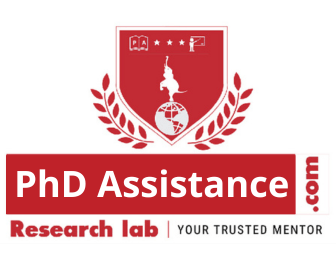Marine cloud brightening (MCB) requires accurate modeling of aerosol activation. Current aerosol activation schemes differ in their macro- and microphysical assumptions to activate aerosol into cloud droplets, causing differences in output from models estimating cloud albedo responses. These differences create a challenge for making predictions about the consequences of regional or global deployments (Song, P., et al., 2025; Zhang, Y., et al., 2025).
Unified models will bolster confidence in MCB feasibility
Improved comparability between simulation studies
Improved thresholds for readiness of field experiments
Song et al. (2025). The effectiveness of solar radiation management using fine sea spray across multiple climatic regions. Atmospheric Chemistry and Physics, 25, 2473–2494.
Zhang et al. (2025). Impact of host climate model on contrail cirrus effective radiative forcing estimates. Atmospheric Chemistry and Physics, 25, 473–489.
Cirrus cloud thinning (CCT) was proposed to help reduce the heat retention of the Earth by affecting the ice nuclei, but current climate models rely on unvalidated assumptions. Satellite-derived products (e.g., CALIPSO data) may help constrain some microphysical parameters and allow an improved measure of radiative forcing (Erfani & Mitchell, 2025; Zhang et al., 2025).
1. To what extent do GCMs reproduce satellite-observed cirrus properties?
2. What are the relative impacts of ice crystal size and ice crystal phase on radiative forcing?
3. How can CCT implementation concerning climate models and satellite data improve reliability?
Grounded estimates for CCT cooling impacts
A validation framework for high-altitude SRM approaches
Better basis for policymaking on atmospheric interventions
Erfani & Mitchell (2025). Constraining a Radiative Transfer Model with Satellite Retrievals: Implications for Cirrus Cloud Thinning. EGUsphere Preprint.
Zhang et al. (2025). Impact of host climate model on contrail cirrus effective radiative forcing estimates. Atmospheric Chemistry and Physics, 25, 473–489.
Most MCB simulations focus on single regions, but actual deployment will require coordination across multiple regions. It is not clear whether climatic effects from regional deployments are additive, or whether they will have synergistic effects or offsetting interactions (Lee et al, 2025; WCRP, 2025).
Global MCB planning with diminished unintended consequences
Policy creation and design for regional and international collaborative interventions.
Another way in which climate resilience can be built for areas with the most vulnerability.
Lee et al. (2025). First Simulations of Feedback Algorithm-Regulated Marine Cloud Brightening. Geophysical Research Letters.
WCRP (2025). Lighthouse activity: An assessment of major research gaps in solar radiation modification research. Frontiers in Climate.
Enhanced Rock Weathering (ERW) is known primarily as a method for carbon capture, and as it applies to surface reflectivity, it has the potential for Surface Albedo Modification (SAM) and regional cooling, particularly in arid or agricultural regions, however, the albedo-climate feedbacks related to ERW have not been well explored (Jian et al., 2025; Marston & Ibarra, 2025).
Climate-smart agriculture and land management
Internalization of CDR and SRM in policy (globally)
More refined models for land surface-atmosphere coupling models
Jian et al. (2025). Land-Use Change and Surface-Albedo Cooling from Enhanced Rock Weathering. Nature Climate Solutons.
Marston, J. B. & Ibarra, D. E. (2025). Removing Atmospheric Carbon Dioxide Using Large Land Or Ocean Areas Will Change Earth Albedo And Force Climate. Physical Review Applied, 15 (1), 014001. –
Marine Cloud Brightening (MCB) will likely influence more than just the climate, as changes in levels of light, temperature and ocean stratification may have direct effects on marine ecosystems, including significant changes to primary productivity and biodiversity. New research emphasizes the important need for ecosystem-informed environmental modeling integrated into research frameworks that engage in SRM modelling (Ayissi et al., 2025; Hernandez-Jaramillo et al., 2025).
Provide effective SRM interventions that manage the ecological risks succeeding MCB and ensure it has a double benefit with respect to climate change and ecological sustainability.
Stimulate cross disciplinary collaboration between ecology, oceanography and geoengineering
Provide a way to assess the impacts MCB could have on oceanographic ecosystems
Hernandez-Jaramillo et al. (2025). A review of plume dispersion and measurement techniques applicable to marine cloud brightening. Frontiers in Marine Science, 12.
Ayissi et al. (2025). Ocean Stratification and Phytoplankton Response to MCB in Equatorial Waters. Journal of Marine Systems.
As adaptive reuse is widely positioned as a sustainable and less-costly way forward than a new build, we have almost no empirical analysis that encompasses its economic feasibility across a building life cycle. Most examination of adaptive reuse projects exist primarily in architectural or heritage context and make evident their general avoidance of analysis that balances costs and benefits over a longer term. The lack of standardized methods of estimating lifecycle costs and reuse opportunity costs, and value after occupancy contributes to the uncertainty developers, policy makers and investors face deciding whether to pursue reuse investments.
What economic and lifecycle assessment models are best for AR projects situated in dramatically different urban contexts, such as suburbs, rural areas, and downtown economic districts?
What part do multi-criteria decision-making tools play in helping evaluate economic feasibility and viability related to AR initiatives
What are the positive/negative economic trade-offs associated with costs of preservation, retrofit, and new builds looked at across a building life cycle?
Framework that lends to a practical way to provide credible feasibility studies for adaptive reuse.
Decision making and evaluation tools that provide assistance to investors, architects and urban planners.
Evidence-based policy recommendations and increased understanding of private investment in to adaptive reuse.

